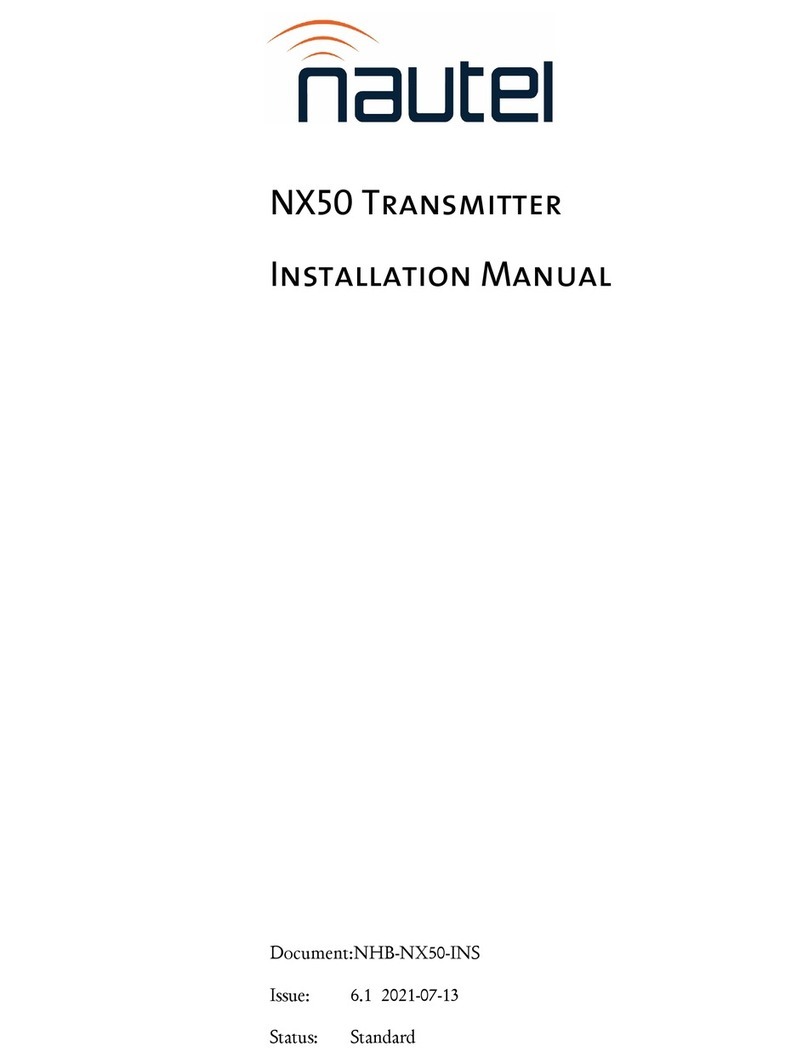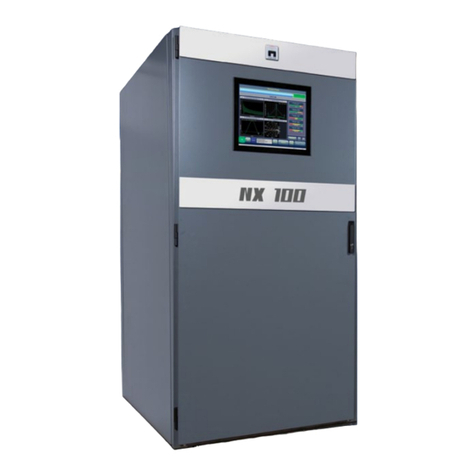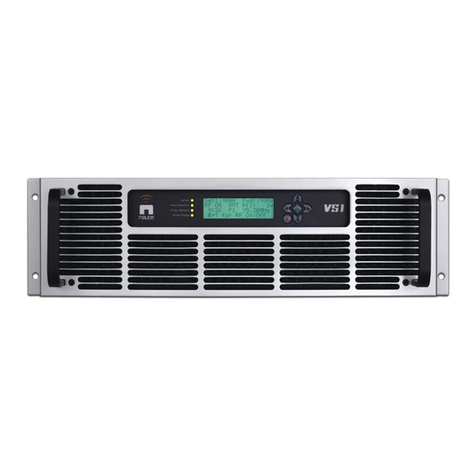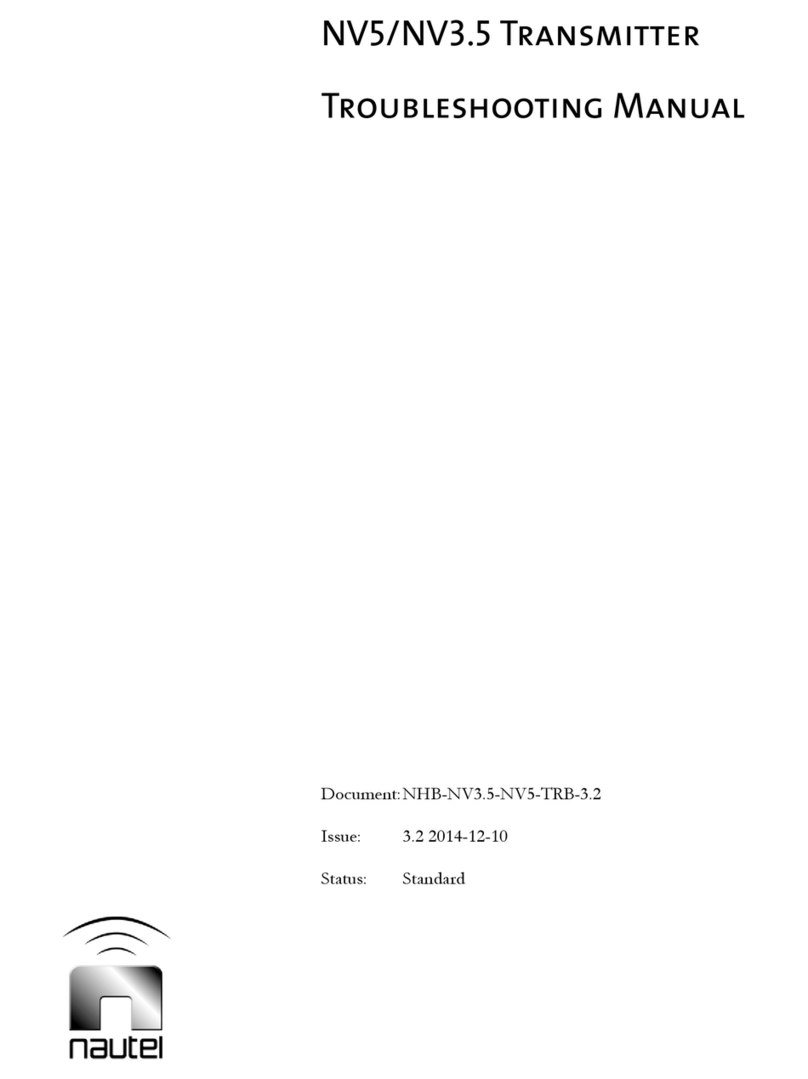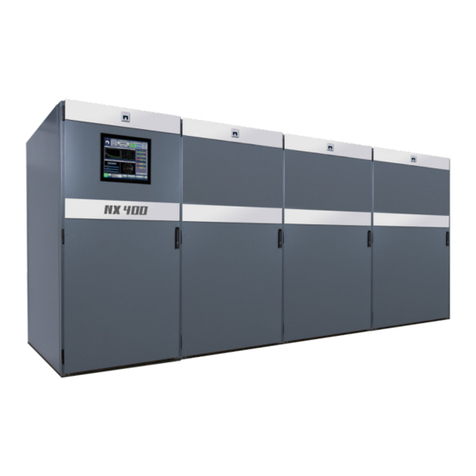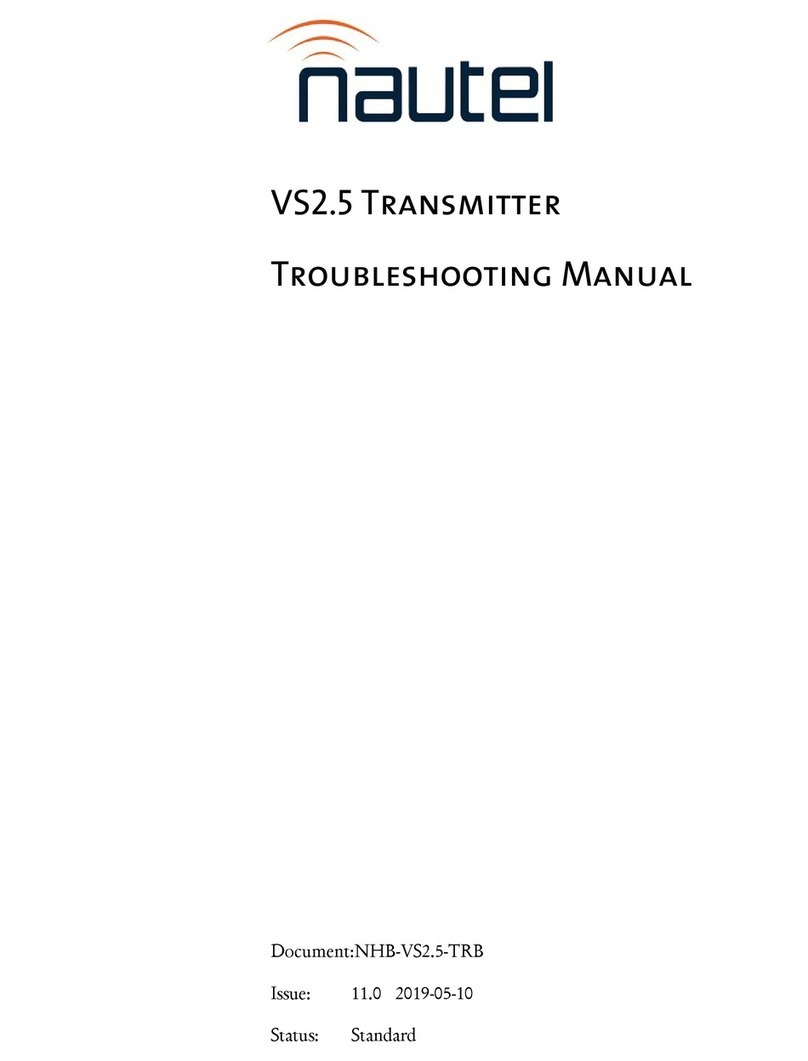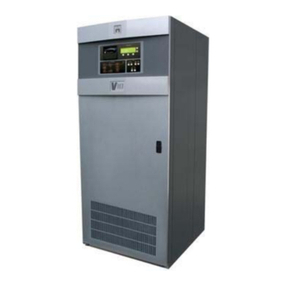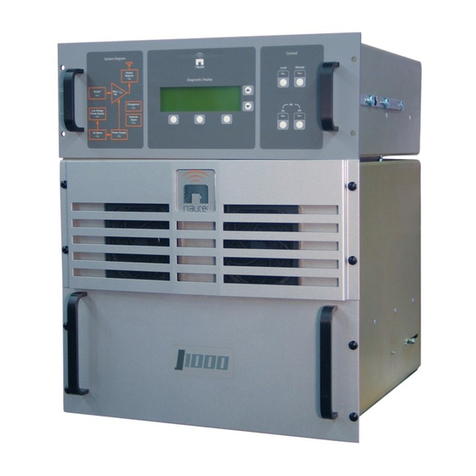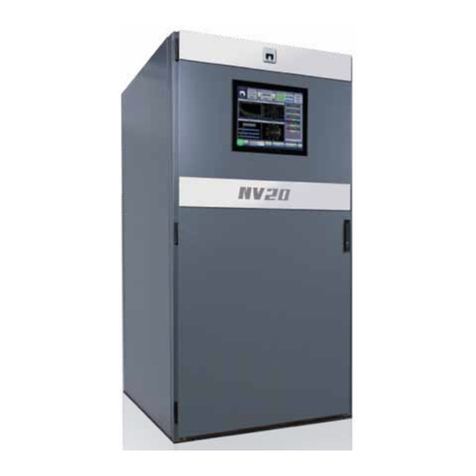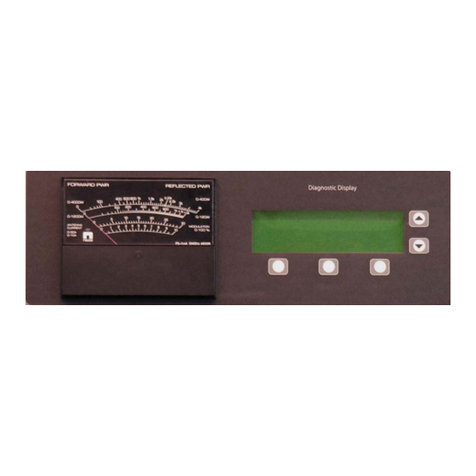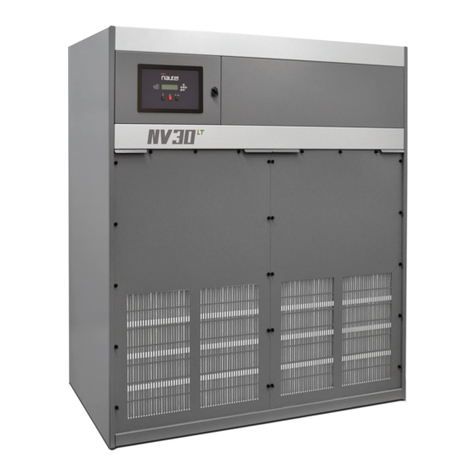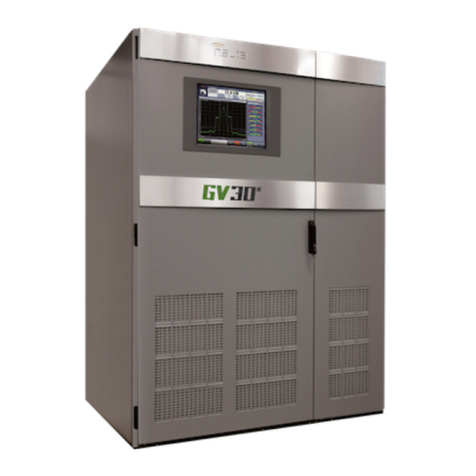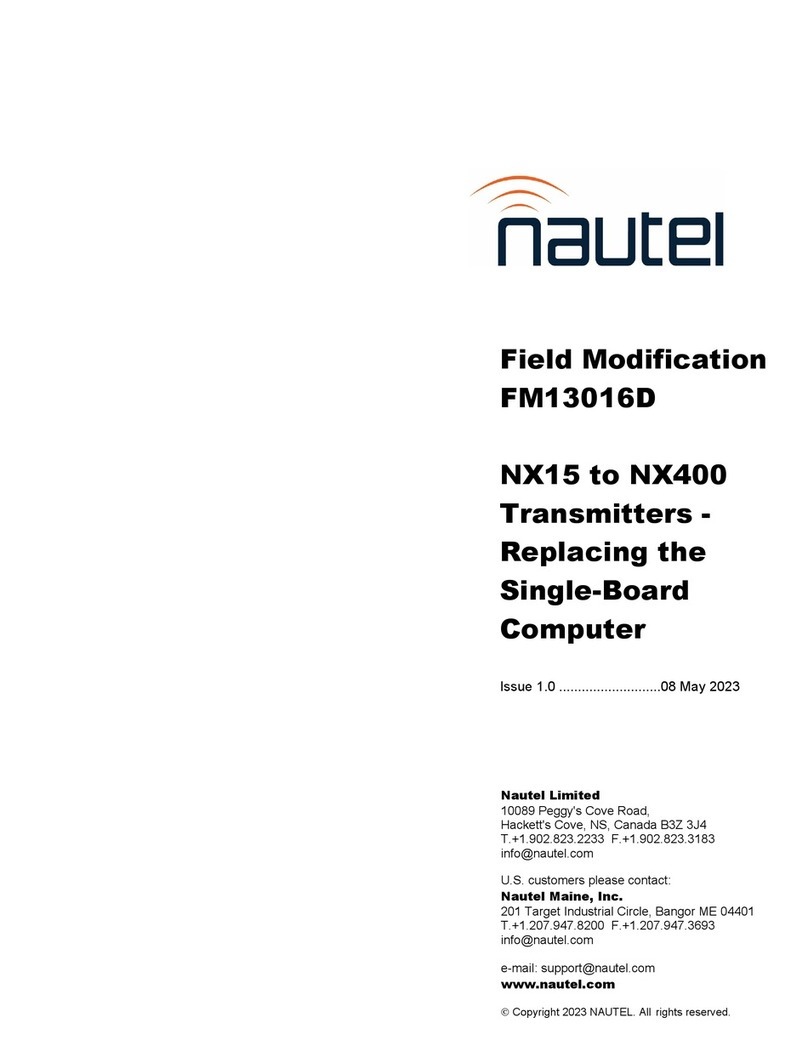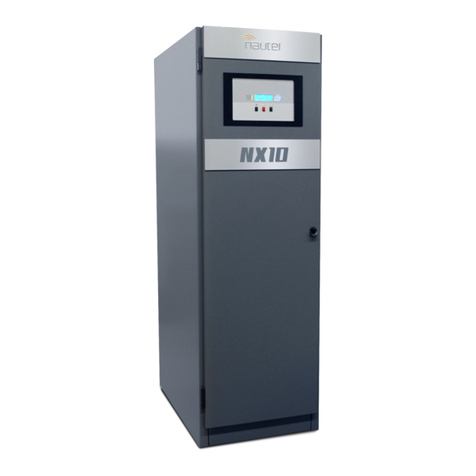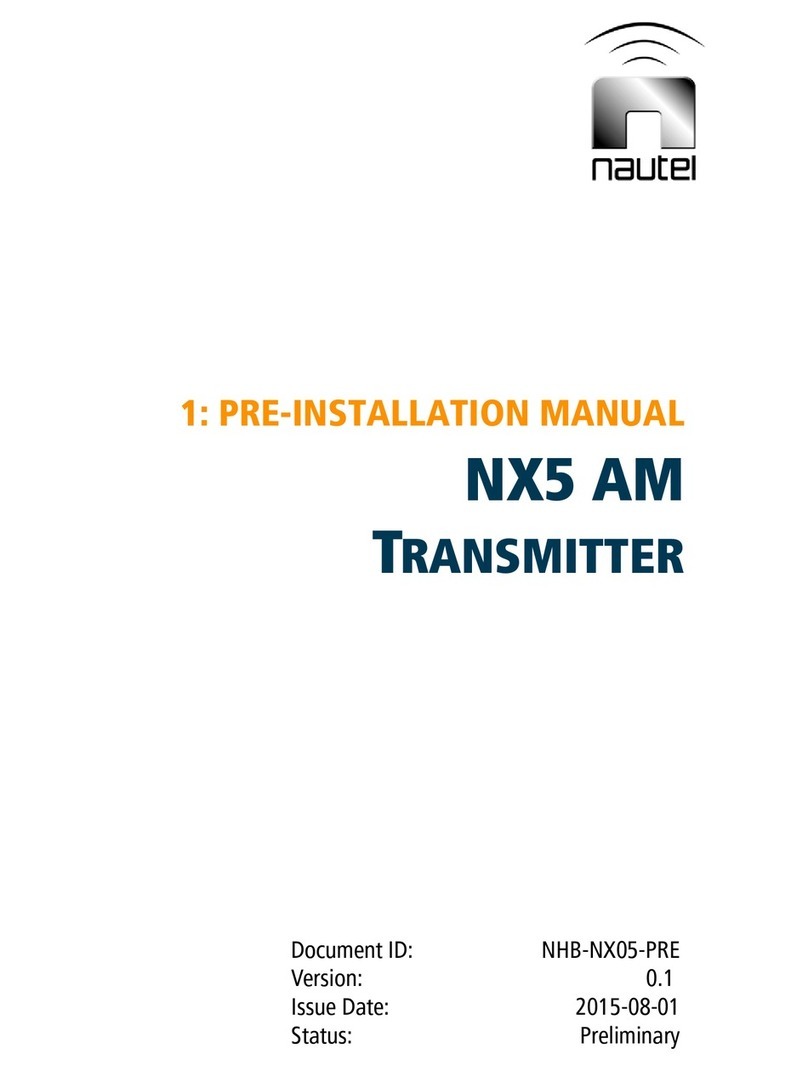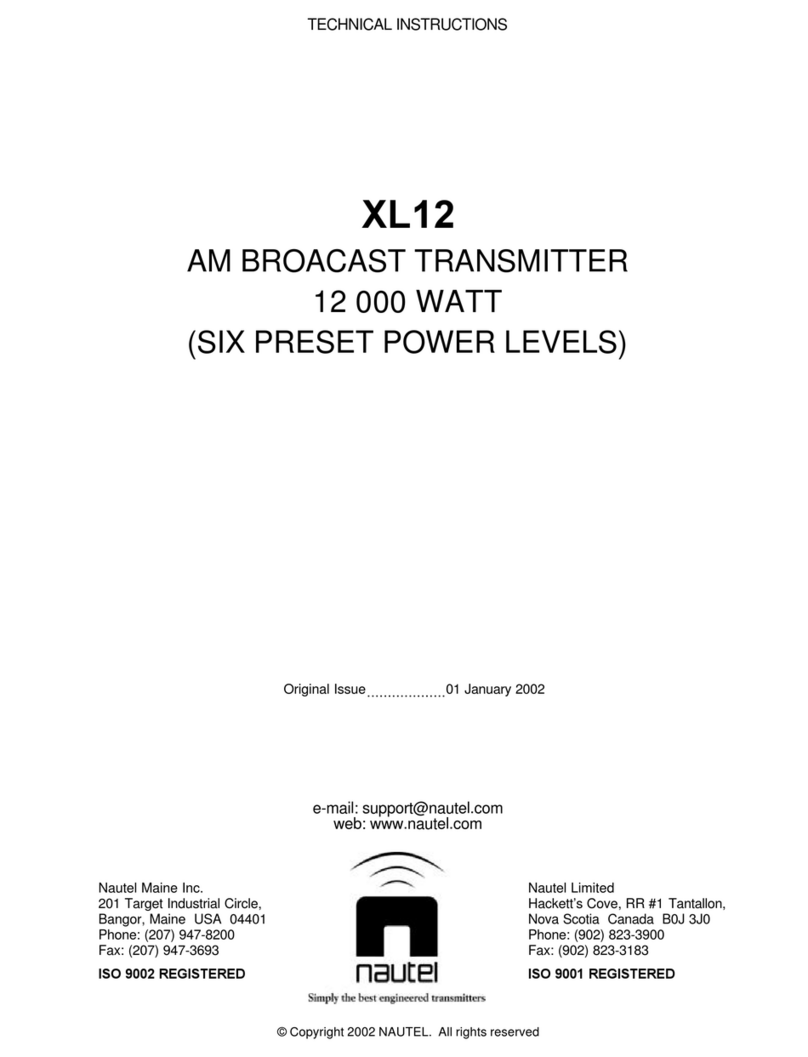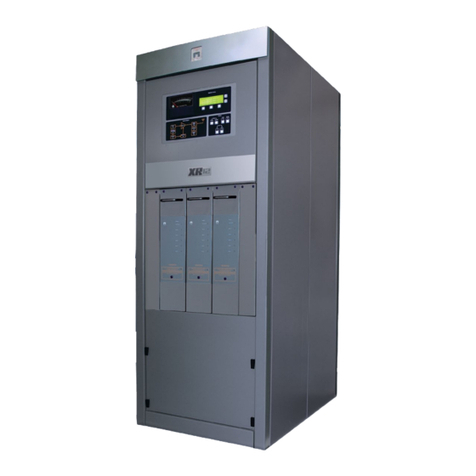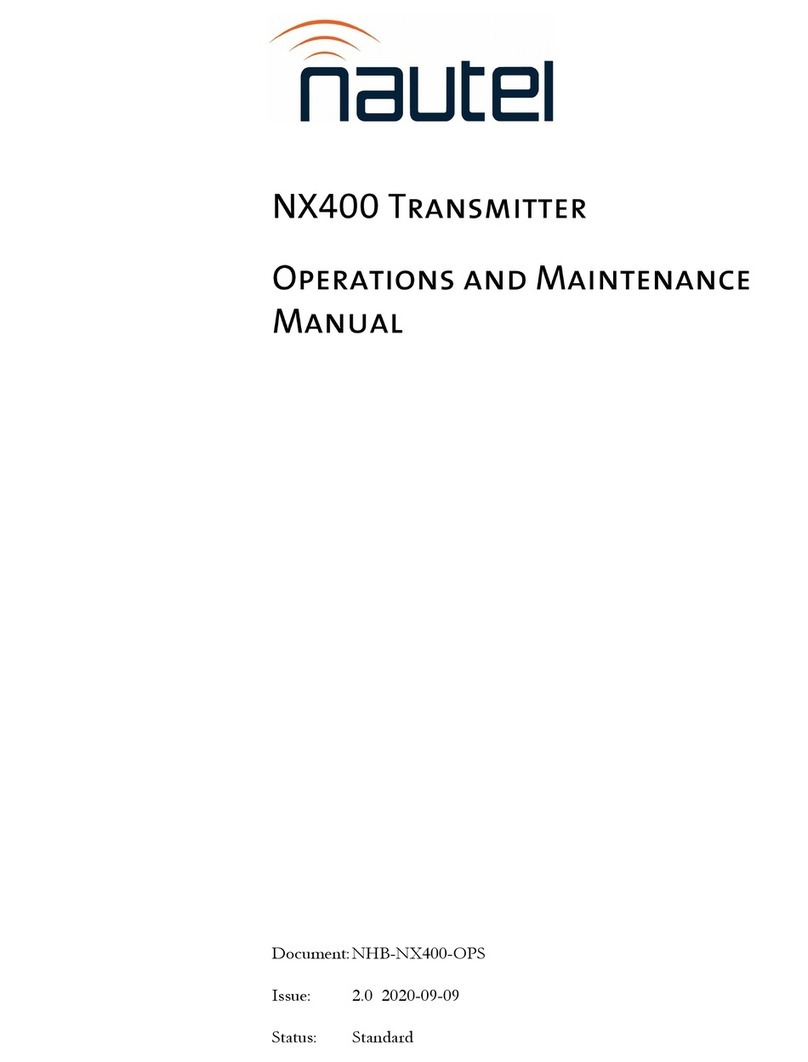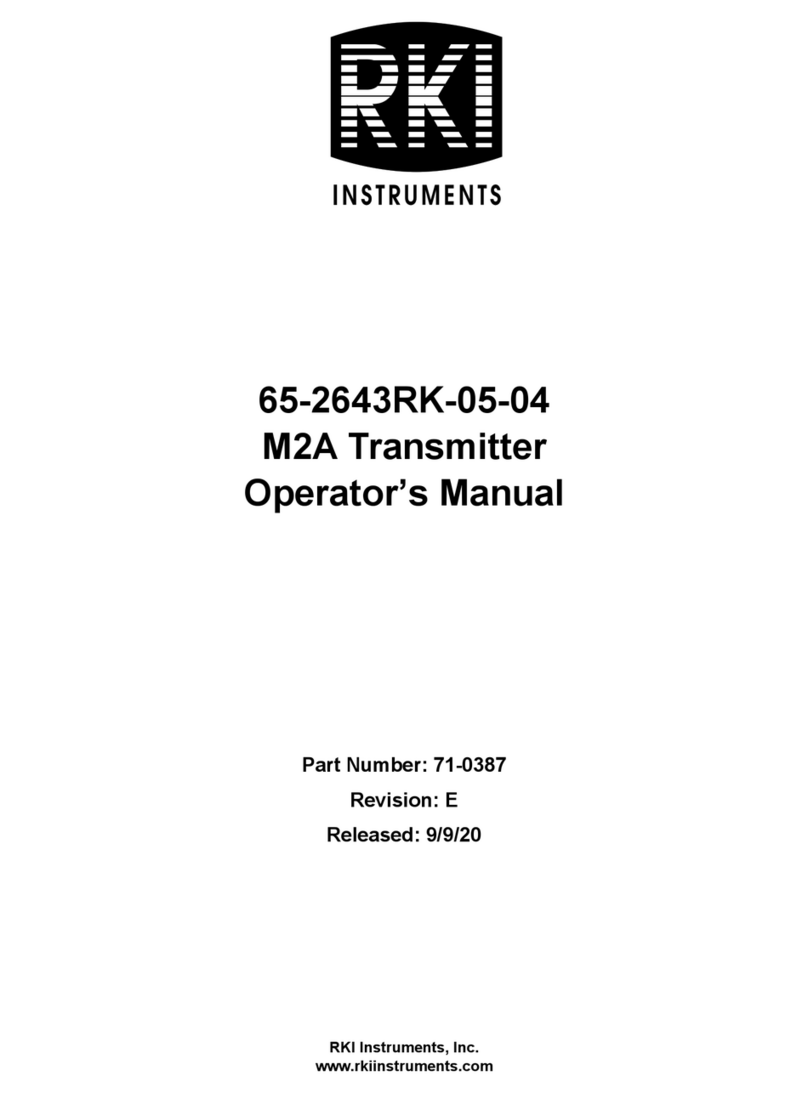
MAIN/STANDBY 125 WATT RADIOBEACON TRANSMITTERS WITH CRCU and NDDS/T
(USER SUPPLIED ENCLOSURE/CABINET)
IS02007 (Page 1)
15 February 2002
INTRODUCTION
1. When two ND500II 125 watt radiobeacon
transmitters, an NAX51A computer remote control
unit (CRCU) and an NDDS/T Dual Direct Digital
Synthesizer (DDS) are installed in a main/standby
installation, some mechanical information in the
transmitter's instruction manual must be changed and
the cabinet's electrical information is required. This
document identifies the mechanical differences. It
also provides an electrical parts list and point-to-
point wiring information for the cabinet. It is
recommended that, where replacement pages are not
provided, affected areas of the transmitter instruction
manual be highlighted using a suitable marker, or
changed using pen and ink, to ensure users of the
manual are aware of the differences.
1.1 MAIN TRANSMITTER: The
transmitter identified as ND500II-113-x21 on its
nameplate must be used as the main transmitter.
This transmitter has an NAF107/02 harmonic filter
assembly, which contains a main/standby
changeover relay and an additional type 'N' coaxial
connector (J3). The changeover relay ensures only
one transmitter is turned on and that the RF output of
the active transmitter is applied to the antenna
system's antenna tuning unit (ATU). The main
transmitter is enabled as long as its RF output is
satisfactory. See ND500II instruction manual for
details on the NAF107/02 harmonic filter assembly.
1.2 STANDBY TRANSMITTER: The
transmitter identified as ND500II-013-x21 on its
nameplate must be used as the standby transmitter.
MECHANICAL DIFFERENCES
2. There are no drawer slides on the
transmitters, as depicted in figure MD-17. The
method of installation will determine how access is
gained for servicing. References to extension and
swivelling of the transmitter in the instruction
manual should be ignored. If it is not possible to
access a specific area of the transmitter when it is
installed, the transmitter must be moved to a suitable
work surface.
OPERATION
3. Refer to the ND500II technical instruction
manual for transmitter operation, including the
function of the remote inputs and outputs which are
not related to main/standby operation. Refer to the
NAX51 manual for computer remote control unit
(CRCU) operation. Refer to the NAX198 manual
for NDDS/T operation.
NOTE
The 'A' transmitter contains the main/standby RF
routing relay. This relay is connected as a fail-safe
device which is energized when the 'A' transmitter is
operational (on-air) and de-energized when the 'A'
transmitter is non-operational (turned off/
shutdown). When the relay is energized, the RF
output of the 'A' transmitter is routed to the antenna.
When the relay is de-energized, the RF output of the
'B' transmitter will be routed to the antenna.
3.1 SYSTEM OPERATING STATUS: The
system's xmtr on status and shutdown alarm outputs
provide an indication of the system operating status.
3.1.1 If the 'A' or 'B' transmitter is turned on and
producing a satisfactory RF output, the following
will be true, regardless of the system's main/standby
status:
(a) The system's xmtr on status output at 3TB2-10
(XMTR ON) of the remote control interface
assembly will be a ground potential.
(b) The system's shutdown alarm output at 3TB1-3
(SHT DN ALM) of the remote control interface
assembly will be a positive DC voltage.
3.1.2 If neither transmitter is enabled (not
turned on or shut down because of malfunctions),
indicating the system is non-operational and is not
producing an RF output, the following will be true:
(a) The system's xmtr on status output at 3TB2-10
(XMTR ON) of the remote control interface
assembly will be a positive DC voltage.
(b) The system's shutdown alarm output at 3TB1-3
(SHT DN ALM) of the remote control interface
assembly will be a ground potential.
